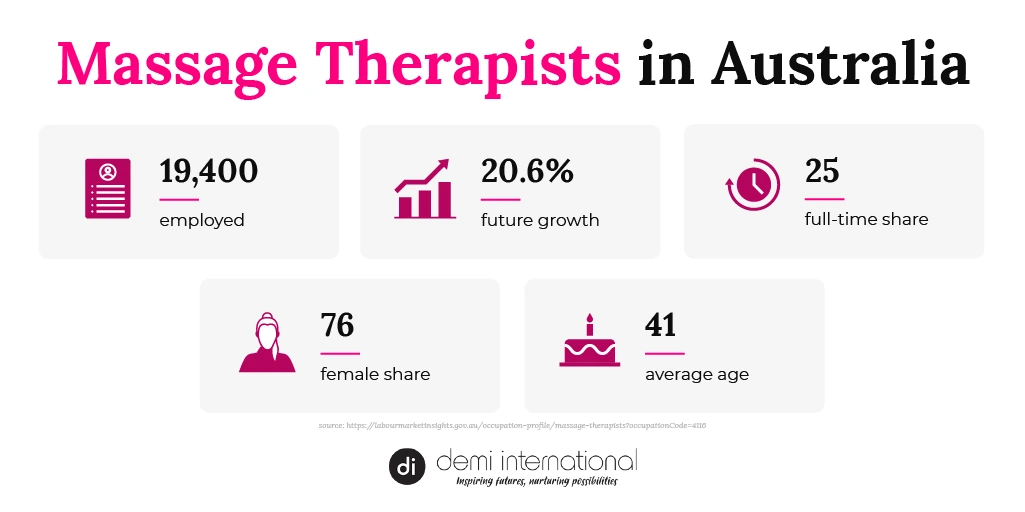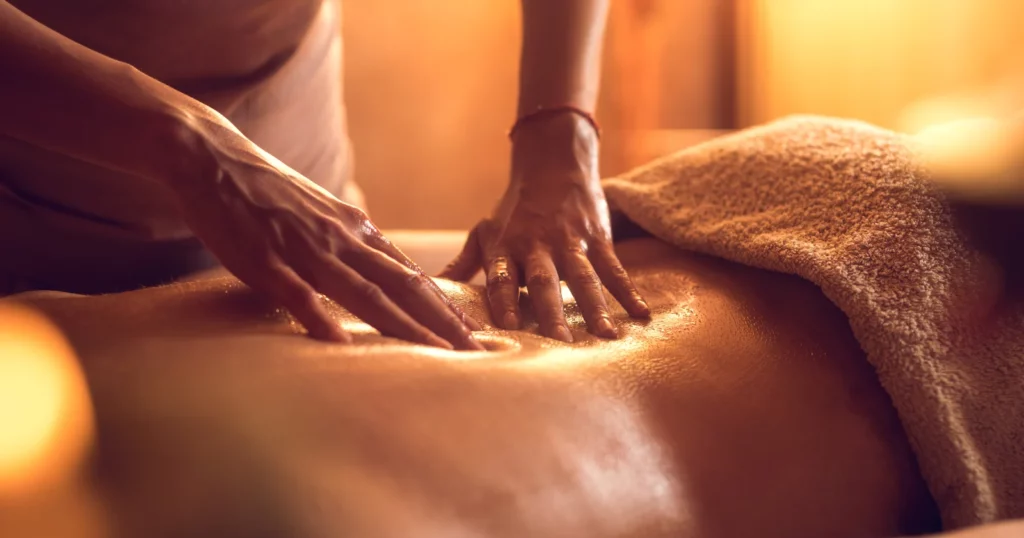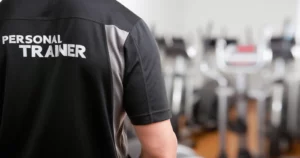Remedial massage is a natural therapy gaining popularity across Australia as patients seek drug-free support to manage pain, injury and rehabilitation.
As a complementary therapy, remedial massage is respected and recommended as a preventative pathway for reducing chronic disease and improving overall health outcomes by leading healthcare bodies, including the World Health Organisation and Queensland Health.
Rising acknowledgement and demand for services are creating more jobs, and industry growth is predicted to climb, making this a great time to kickstart a career in massage.

What is remedial massage?
Remedial massage is a type of massage therapy focused on treating specific injuries and chronic conditions. If a remedial massage therapist has ever treated you, you’ll understand how their healing hands can alleviate tension, manage chronic pain and help to melt away built-up stress.
What makes remedial massage therapy different?
In contrast to other forms of massage therapies, like relaxation or deep tissue massage, remedial massage is focused on specific goals and outcomes rather than simple relaxation.
Trained remedial massage therapists work with patients to identify areas of concern and create an individualised treatment plan. With a plan in place, they use various techniques to manipulate soft tissue, including muscles and tendons, and support postural and muscle imbalances that may contribute to poor function and reduced quality of life.
Remedial therapists are qualified to treat pain and mobility challenges using a mixture of methods, including:
- Postural correction and joint mobilisation
- Muscle stretching and strengthening exercises
- Relaxation and deep tissue massage
- Trigger point therapy
- Myofascial release
- Muscle energy technique
- Neuromuscular facilitation
- Mind and body connection
- Neuroscience of pain
- Diet and nutrition guidance
Qualified remedial therapists serve as educators to their clients, helping them understand how to live a more holistic lifestyle to support their overall wellbeing, and referring them to other healthcare providers as needed.
Some therapists undertake further training to offer specialised services, including pregnancy and infant massage, reflexology, dry needling and myofascial cupping.
No matter the method and techniques used, the goal of remedial massage therapy is to reduce pain and discomfort and improve overall function.
What are the benefits of remedial massage?
From managing chronic pain to supporting your immune system, remedial massage therapy can benefit the mind and body in many ways.
Explore the 7 Key Benefits of Remedial Massage Therapy.
Career options for remedial massage therapists
You can enjoy several job types as a qualified remedial massage therapist. Common roles include:
Work for yourself
Whether you work from home, offer a mobile service or open a local massage therapy practice, starting a private clinic will allow you to become your own boss, see clients on your terms and manage your schedule in a way that works for you. Better still, you can set your own rates and manage a team of therapists if that’s your dream.
Work in a clinical setting
Remedial massage therapists commonly work in clinics and healthcare facilities, treating patients with specific injuries or conditions. Healthcare settings are a great learning environment where you’ll often collaborate with other healthcare professionals, like doctors and physiotherapists.
Work in the tourism and wellness space
Remedial massage therapists can find work across the globe, providing relaxation and remedial massage to guests at retreats, resorts and spas. These roles are often very social and come with other perks, like working in remote locations or on a cruise ship.
Working in sports and fitness
Mad about sports? You could pursue a role working as a remedial massage therapist at a sporting or fitness club. These often sought-after roles can see you working with sportspeople and athletes to help them recover from injury and improve their performance.
Enhance your energy healing practice
Combine a remedial massage therapy qualification with training in body energetics, herbal medicine, yoga and crystal healing to harness the power of energy medicine.
Become a massage therapy trainer
Many experienced remedial massage therapists land in the training space as their career progresses. Sharing your knowledge and giving students the skills to chase their dreams can be gratifying work and a nice change of pace for you. Learn why
How to get qualified as a remedial massage therapist
To become a successful remedial massage therapist in Australia, you must hold a Diploma and complete 200 hours of supervised clinical practice.
The Demi International Diploma of Remedial Massage [HLT52015] is one of the most well-rounded remedial massage courses available in Queensland, that will have you job-ready in 12 months of full-time study.
This robust course will teach you the theory and practical skills you need to become a successful remedial therapist, covering the following learning areas:
- Remedial massage techniques and theory
- Sports injury prevention and management strategies
- Anatomy, physiology and functionality
- Musculoskeletal assessments and adapting treatments
- Putting research and evidence into practice
- Sports taping and injury prevention
- Engaging with health professionals
- Health, safety and infection control and prevention
- Client management and small business planning
Tuition fees include a professional massage kit with oils, four skills upgrade workshops (pregnancy and infant massage, reflexology, myofascial cupping and dry needling), and textbooks.
To graduate, you are required to complete 200 supervised clinical hours to grow your practical skills and consolidate your knowledge.
To begin working as a professional remedial therapist, you’ll need to become a paid member of an approved Australian massage therapy association and commit to long term professional development.
Can I become a remedial massage therapist with a certificate course?
A Certificate IV allows you to provide relaxation or Swedish massage but does not allow you to practice as a Remedial Therapist in Australia.
How much does a remedial massage therapist earn?
The average salary for a remedial massage therapist in Australia is $74,344 per year, or around $35 per hour. Entry-level positions start at $58,000 per year, but more experienced therapists can earn up to $103,155 per year.
One way to increase your earning capacity is to explore a dual qualification, like remedial massage therapy and yoga or personal training. Having skills and knowledge in both areas can widen your service offering and boost your income.
Pathways to higher learning from remedial massage
A Diploma in Remedial Massage is a recognised pathway to further study in myotherapy, exercise science, occupational therapy, physiotherapy, and health science careers. A remedial massage qualification also complements psychology, yoga, nutrition and nursing roles.
How to find a job in remedial massage
There’s no shortage of remedial therapist jobs on offer across Australia, listed on popular platforms like Seek and Indeed. Demi International students are supported to explore potential employment opportunities through industry guest presentations and our academy job board.
What you should know before studying to become a remedial massage therapist
- As a remedial massage therapist, you can have a tangible impact on the health and wellbeing of your clients, making it a rewarding career choice
- Hands-on training is just as important as learning theory
- Being a massage therapist is physically demanding, and you’ll be on your feet a lot. Invest in good quality shoes, regular exercise and nutrition to keep you strong and maintain your stamina
- Every client deserves the utmost confidentiality and respect, as outlined in the Massage Therapy Code of Conduct
- Seek a mentor to check in with you as you build your client base and help you work through challenges. Demi trainers mentor graduates through each stage of training and start-up.
- Niching into specific areas, like pregnancy or geriatric remedial massage, can enhance your career and attract specific clientele
- You’ll need to complete yearly professional development to gain continuing education points, so be prepared to become a life-long learner.
Begin your remedial massage career journey today…
Enrol online or reach out to one of our friendly Course Advisors who can answer your questions about massaging course components, start dates, payment options and enrolment eligibility.







